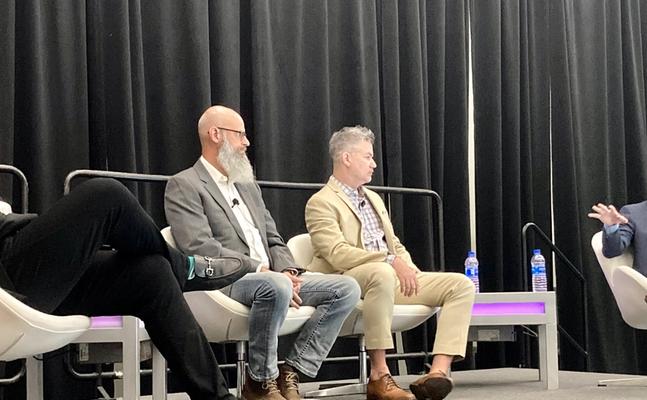Smart home technology is revolutionizing how renters live and how operators conduct business. While each smart home solution has its own intrinsic benefits, operators are seeing exponential returns when they implement a select trio of products together.
Smart locks, thermostats and leak detection sensors complement the functionality of one another to a degree that amplifies the individual value of each. Working together, they optimize self-service touring functionality, improve HVAC and energy conservation, and enhance overall asset protection.

During the 2022 Apartmentalize session, A Smart Home Trilogy to Optimize Operations and Teams, SmartRent Chief Operating Officer Demetrios Barnes sat down with Chris Acker, vice president of community technology services at LMC, Alex Cuenca, director of asset performance at Maxus Properties, LLC, and Bevan White, director of marketing for RAM Partner, to highlight the ways those three smart home technologies have empowered teams, maintained occupancy and built ROI.
“When you bring that all together, this is the new standard that you’re seeing in the industry,” Barnes said of the proptech trio. “What we’re learning is that in some markets, this is a requirement. If you’re not there, yet, it’s time. It’s not just about the rent lift anymore; it’s all of that additional savings.”
From a value proposition standpoint, all three smart home products stand solidly on their own.
In addition to sheer convenience for residents, smart locks are tremendous time savers for property teams. Instead of physically providing access to dog walkers, food delivery services, guests and residents who forgot their keys, associates can remotely provide access. Smart access control systems enable operators to customize self-guided touring experiences by granting prospects temporary access to certain areas of the community. They can do the same for vendors and maintenance teams.
Smart thermostats enable residents and management teams alike to optimize energy consumption. Residents can program their thermostats to limit energy use while they are away from home. Operators can program thermostat settings on vacant homes for optimal energy use, and create temporary settings during scheduled tours to preferred climate conditions. They can do the same for offices, common areas and amenity spaces during off hours to create a more efficient overall community.
Leak detection technologies generate alerts at the first sign of water intrusion, limiting or preventing costly repairs. Considering the average water leak averages $1,800 just for repairs – not factoring in the cost of resident displacement and temporary relocation, rent loss, or concessions – the cost prevention capabilities of leak detection systems are tremendous.
While the term “smart home” indicates an ability to work independently, it is the collective potential of fully integrated locks, thermostats and leak detection that is changing multifamily.
“Asset protections like humidity sensors, water shut-off valves and leak detectors, smart locks for maintenance and touring, and smart thermostats to control spaces while they’re not occupied are all creating efficiencies, without undermining your core operating platform,” said Acker. “They also have to work with your core operating system to create a single platform, and not create more work for your associates.”
Smart home solutions must fully integrate with one another and property management systems, but they also must play nicely with associates and residents. While the hardware involved in smart locks, thermostats and leak detectors may appear simplistic, any associated software and apps must also be easy to use.
Panelists said it is also important to remember that when technologies are both associate- and resident-facing, they require solid training, support and security platforms.
White said his company requires full access to their tech partners’ support teams during initial implementation.
“When we go live, we do ask our partners to be there on-site to do a full training with the team, so they can ask any questions they want to. We test everything and it’s all hands-on,” White said. “That training is crucial, as is training for our residents when they move in. We have our partners walk us through how to talk about the product with residents and how to best show residents how to use it.”

When smart home tech is user-friendly, it is used more consistently and effectively and becomes a highly valued and coveted aspect of the associate and resident experience. After being fully immersed in a strategically deployed smart home environment, residents and team members alike won’t settle for anything less, driving both resident and employee retention, along with occupancy and NOI.

